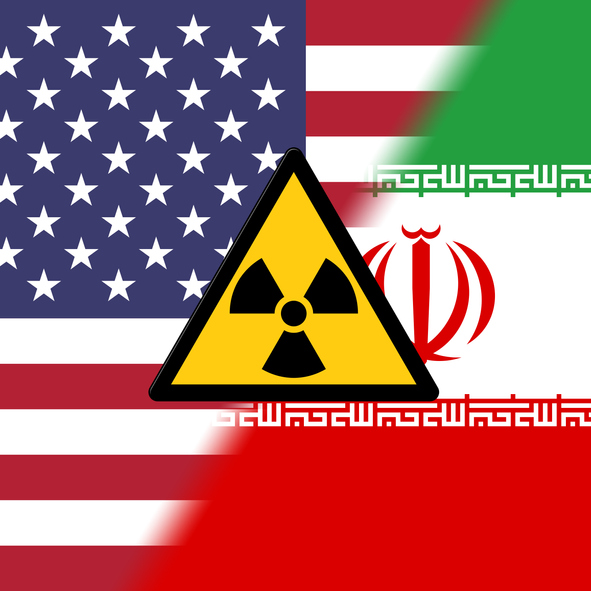No longer able to claim the nuclear deal it is negotiating with Iran will be “longer and stronger” than the 2015 Joint Comprehensive Plan of Action (JCPOA), the Biden administration is now trying out the claim that the agreement will at least slow Iran’s attacks on U.S. troops.
At a March 31 press briefing, State Department spokesperson Ned Price claimed that without “the nuclear shackles of the JCPOA” in place, “rather than Iran’s proxies be subdued, we have actually seen them emboldened.” Arguing that “the effort to subdue Iran’s proxies has not worked under the strategy that we inherited,” he referred to a return to the JCPOA as “a strategy that does work, that is effective.” Earlier this year, White House Press Secretary Jen Psaki and Senator Chris Murphy (D-Conn.) similarly implied that a new deal will curb Iranian aggression.
Unfortunately, the publicly available data does not support Price’s unclear, narrow and inconsistent claims. A comprehensive examination of Iranian regional aggression before, during and after the JCPOA shows that a new deal would likely increase Iranian aggression.
“From 2012 to 2018,” Price claimed, “there were no significant attacks, there were no attacks against U.S. service members, diplomatic facilities in Iraq” by Iranian proxies. This claim, though true, is so narrow as to be meaningless or misleading.
Attacks on U.S. troops in Iraq are not the sum total of Tehran’s aggression. Iran has been engaged in a wide range of malign activity across the entire Middle East, targeting U.S. personnel, interests and partners. The Jewish Institute for National Security of America (JINSA) collected data on the major forms Iran’s regional aggression has taken—projectile strikes, naval harassment, cyberattacks, weapons tests and the kidnapping and wrongful detention of Westerners—from January 2015, before the JCPOA was adopted, to the present.
JINSA’s data reveal that, although Iran was not directly attacking U.S. troops in Iraq between 2012 and 2018, in part because Iranian-backed militias in Iraq were busy fighting ISIS, Iran was engaged in significant regional aggression—including against American personnel—during that period. For example, Iran illegally seized two U.S. naval vessels in January 2016, detaining the American sailors on board. According to the State Department’s own reporting, there were 22 incidents of Iranian watercraft engaging in “unsafe and unprofessional” behavior toward U.S. naval vessels in 2015 and another 36 instances the following year.
In fact, contrary to Price’s claim, Iranian malign activity more than doubled from 2015 to 2017.
Nor did, as Price claims, “the number of attacks from Iran-backed groups [increase by] 400 percent” between 2019 and 2020. JINSA’s data shows only a 183 percent increase in the number of specific incidents in Iraq during this period. JINSA found a 341 percent increase in the total munitions fired against American troops in Iraq, a figure closer to Price’s claim, but a different metric than the one he used.
Price argued that Iran’s aggression “was in the aftermath of the decision to abandon the JCPOA,” “to apply the [Foreign Terrorist Organization] designation to the Iranian Revolutionary Guard Corps” and “the killing of [Qasem] Soleimani, the IRGC chief.” Yet Iranian aggression did not begin with any of these events. The greatest increases to Iranian aggression occurred during periods of diplomatic engagement under Barack Obama and Joe Biden.
After the JCPOA’s adoption in October 2015, the rate of Iranian aggression more than tripled. It also increased after President Donald Trump’s withdrawal from the JCPOA, but at a slower rate. Tehran escalated further after President Joe Biden took office promising diplomatic outreach, doubling its aggression since January 2021.
In short, while sanctions did not curb Tehran’s willingness to attack U.S. forces, interests and partners, diplomatic initiatives have only fueled them more, despite the Biden administration’s attempts to claim otherwise on the basis of partial data.
This conclusion should not come as a surprise to the White House. After all, Biden entered office acknowledging that the JCPOA was insufficient to address Tehran’s malign activity. He pledged “to strengthen and extend the nuclear deal’s provisions” and “to help partners reduce tensions and help end regional conflicts.”
Yet the outlines of the new deal do not live up to Biden’s promises. With weaker and shorter restrictions on Iran’s nuclear program, no discussion of Iran’s regional aggression and significant sanctions relief, including potentially removing the Islamic Revolutionary Guard Corps from the U.S. terrorist list, the deal will enrich Iran and facilitate further malign activity.
Despite what President Biden and his administration say, cherry picking data cannot make a new nuclear deal look rosier, or Iran less violent, than it already was.
Blaise Misztal and Ari Cicurel are Vice President for Policy and Senior Policy Analyst, respectively, at the Jewish Institute for National Security of America (JINSA).
Originally published in Newsweek.

